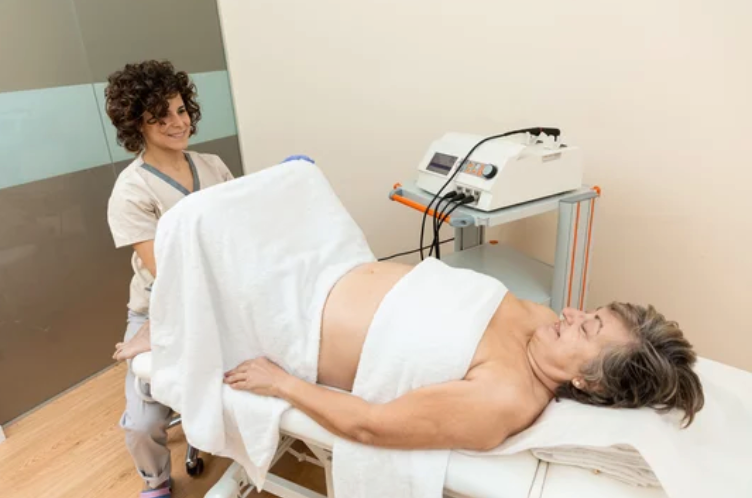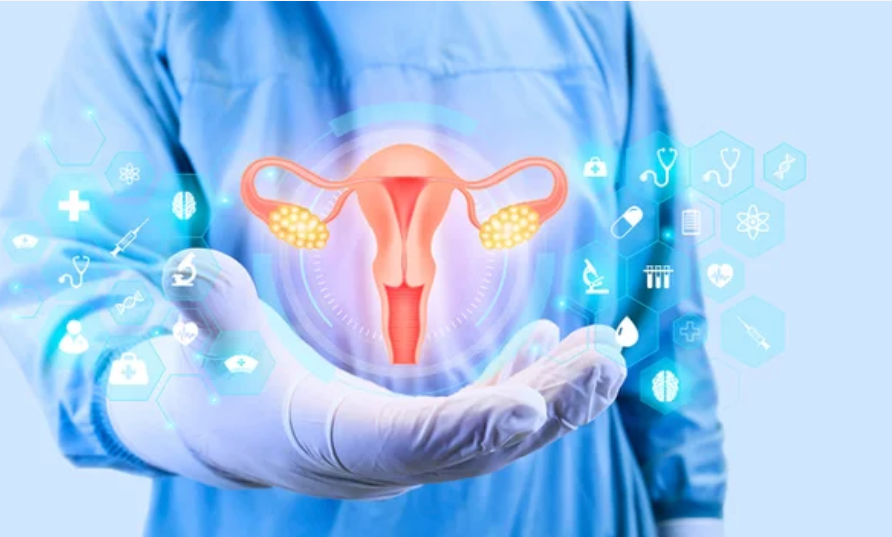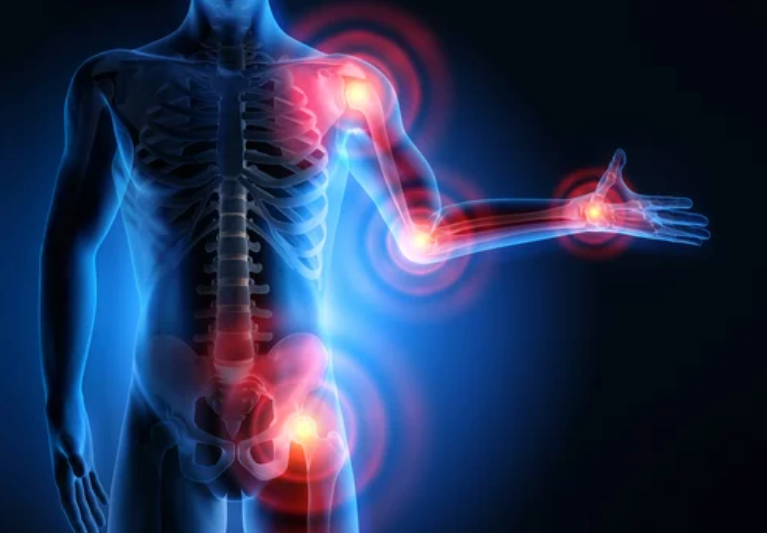WOMEN HEALTH PHYSIOTHERAPY BE CURIOUS-A LOT MORE TO EXPLORE
Women’s health physiotherapy is a specialized field within physiotherapy that focuses on the unique health needs and conditions specific to women. It encompasses a wide range of areas related to women’s health, including pregnancy, postpartum care, pelvic floor dysfunction, and musculoskeletal issues.
Here are some key areas that women’s health physiotherapy addresses:
- PREGNANCY-RELATED CONCERNS: Women’s health physiotherapists provide support and guidance to pregnant women, addressing issues such as back pain, pelvic pain, and postural changes during pregnancy. They also offer exercises and techniques to improve strength, flexibility, and overall well-being during this time.
- POSTPARTUM CARE: After childbirth, women may experience various physical changes and challenges. Physiotherapists specializing in women’s health can assist in recovery, addressing issues like pelvic floor weakness, diastasis recti (abdominal separation), back pain, and scar tissue management.
- PELVIC FLOOR REHABILITATION: The pelvic floor muscles play a crucial role in bladder and bowel control, as well as sexual function. Women’s health physiotherapists assess and treat pelvic floor dysfunction, including conditions like urinary incontinence, pelvic organ prolapse, and pelvic pain.
- PRE AND POST GYNECOLOGICAL SURGERY: Physiotherapy can be beneficial before and after gynecological surgeries, such as hysterectomy or breast surgery. Pre-operative physiotherapy aims to optimize the patient’s physical condition, while post-operative rehabilitation focuses on pain management, scar tissue management, and restoration of function.
- MUSCULOSKELETAL CONDITIONS: Women’s health physiotherapy can address various musculoskeletal issues that are more prevalent in women, such as osteoporosis, osteoarthritis, and conditions related to hormonal changes like menopause.
- SEXUAL HEALTH: Some women’s health physiotherapists may provide support for sexual health issues, including pain during intercourse, vaginismus (involuntary contraction of the pelvic floor muscles), and other concerns related to sexual function.
It’s important to note that women’s health physiotherapy is a specialized field, and practitioners undergo additional training to provide specific care to women. If you have any specific concerns or conditions related to women’s health, it’s always advisable to seek assistance from a qualified women’s health physiotherapist who can provide a comprehensive evaluation and develop an individualized treatment plan.

PREGNANCY-RELATED CONCERNS:
Pregnancy is a transformative period in a woman’s life, but it can also bring about a range of physical changes and challenges. Women’s health physiotherapy plays a crucial role in promoting optimal health and well-being during pregnancy, addressing concerns such as back pain, pelvic pain, and postural changes, while also focusing on exercises and techniques to improve strength, flexibility, and overall well-being.
One of the most common issues experienced during pregnancy is back pain. As the baby grows, the mother’s center of gravity shifts, and the abdominal muscles stretch and weaken, putting strain on the lower back. Women’s health physiotherapists are skilled in assessing the underlying causes of back pain and providing appropriate treatment. They may recommend exercises to strengthen the core muscles, improve posture, and provide pain relief through techniques such as manual therapy, soft tissue release, and the use of supportive devices like pregnancy belts.
Pelvic pain is another concern that can arise during pregnancy. This pain is typically felt in the pubic symphysis or sacroiliac joints and can greatly impact a woman’s mobility and quality of life. Women’s health physiotherapists employ various strategies to alleviate pelvic pain, including gentle manual therapy techniques, stabilizing exercises, and advice on activity modification. They may also educate pregnant women about optimal movement patterns and positions to minimize discomfort.
Postural changes are inevitable during pregnancy due to the shift in the center of gravity and the body’s adaptations to accommodate the growing baby. Women’s health physiotherapists assess the postural changes and provide guidance on maintaining good posture, which can help alleviate strain on the spine and improve overall comfort. They may teach exercises to strengthen the muscles supporting proper posture, as well as provide advice on ergonomics and body mechanics for daily activities.
In addition to addressing specific concerns, women’s health physiotherapists focus on overall well-being during pregnancy. They recognize that physical exercise plays a vital role in maintaining a healthy pregnancy and can have numerous benefits for both the mother and the developing baby. However, it’s important to approach exercise during pregnancy with caution and guidance. Women’s health physiotherapists develop tailored exercise programs that take into account the individual’s fitness level, stage of pregnancy, and any existing conditions. These programs often include a combination of cardiovascular exercises, strength training, and flexibility exercises to enhance overall fitness and prepare the body for labor and childbirth.
A key aspect of women’s health physiotherapy during pregnancy is the emphasis on pelvic floor muscle exercises. The pelvic floor muscles provide support to the bladder, bowel, and uterus, and they can become weakened or strained during pregnancy. Physiotherapists specializing in women’s health teach pregnant women how to correctly engage and strengthen their pelvic floor muscles through specific exercises, commonly known as Kegel exercises. Strengthening the pelvic floor muscles can help prevent or alleviate issues such as urinary incontinence and pelvic organ prolapse, which can occur during or after pregnancy.
Women’s health physiotherapists also educate pregnant women about the importance of proper breathing techniques. Deep diaphragmatic breathing not only helps to relax the body and manage stress but also promotes optimal oxygenation for both the mother and the baby. It can be particularly beneficial during labor and childbirth, helping the mother cope with contractions and maintain a sense of calm.
POSTPARTUM CARE:

Postpartum care is a critical aspect of women’s health physiotherapy as it focuses on supporting women in their recovery after childbirth. This phase involves addressing various physical changes and challenges that women may experience, such as pelvic floor weakness, diastasis recti (abdominal separation), back pain, and scar tissue management.
- PELVIC FLOOR WEAKNESS: The pelvic floor muscles undergo significant strain and stretching during pregnancy and childbirth, leading to weakened pelvic floor muscles. This can result in issues like urinary incontinence (leakage of urine), fecal incontinence (involuntary loss of bowel control), pelvic organ prolapse (when the pelvic organs descend into the vaginal canal), and sexual dysfunction. Women’s health physiotherapists play a crucial role in assessing the strength and function of the pelvic floor muscles and designing individualized treatment plans. Treatment may involve pelvic floor muscle exercises, biofeedback techniques, electrical stimulation, and lifestyle modifications to help restore strength and function to the pelvic floor.
- DIASTASIS RECTI (ABDOMINAL SEPARATION): Diastasis recti refers to the separation of the rectus abdominis muscles along the midline of the abdomen. It commonly occurs during pregnancy due to the stretching of the abdominal wall to accommodate the growing baby. After childbirth, women may continue to have a separation, which can contribute to weakened core muscles, poor posture, and lower back pain. Women’s health physiotherapists assess the degree of diastasis recti and provide appropriate exercises to strengthen the deep core muscles, including the transverse abdominis, pelvic floor, and oblique muscles. These exercises aim to close the separation, improve abdominal strength, and restore core stability.
- BACK PAIN: Many women experience back pain during the postpartum period due to hormonal changes, weakened core muscles, and the strain of caring for a newborn. Women’s health physiotherapists assess the underlying causes of back pain and develop personalized treatment plans. Treatment may include strengthening exercises for the deep core muscles, stretching exercises for tight muscles, posture correction, manual therapy techniques, and ergonomic advice for activities like lifting, carrying, and breastfeeding. Additionally, they may teach proper body mechanics and techniques for safe lifting and positioning of the baby to prevent further strain on the back.
- SCAR TISSUE MANAGEMENT: Women who undergo cesarean section or perineal tears during vaginal delivery may develop scar tissue around the incision or perineum, respectively. Scar tissue can lead to pain, restricted movement, and discomfort. Women’s health physiotherapists use various techniques, such as scar mobilization, massage, and stretching exercises, to promote tissue healing, improve scar flexibility, and reduce pain and adhesions. They also provide guidance on self-care techniques, including proper wound care and scar massage, to optimize the healing process.
- OVERALL REHABILITATION AND FITNESS: Postpartum care also focuses on gradually restoring overall strength, flexibility, and fitness levels. Women’s health physiotherapists design tailored exercise programs that take into account the individual’s postpartum stage, fitness level, and any specific needs or concerns. These programs typically include a combination of cardiovascular exercises, strength training, and flexibility exercises to rebuild muscle strength, improve endurance, enhance posture, and promote overall well-being. The exercises are modified to ensure they are safe and appropriate for the postpartum phase.
It’s important to note that postpartum care extends beyond the physical aspects and also includes emotional support and guidance. Women’s health physiotherapists provide a safe and supportive environment for women to express their concerns, fears, and emotions related to their postpartum journey. They offer education and counseling on topics like postpartum depression, self-care, breastfeeding positioning, and strategies for managing the physical and emotional demands of caring for a newborn.
Postpartum care provided by women’s health physiotherapists addresses a range of physical challenges and changes that women experience after childbirth. Through specialized assessment, individualized treatment plans, and comprehensive rehabilitation, these physiotherapists help women recover from pelvic floor weakness, diastasis recti, back pain, and scar tissue while supporting their overall well-being. By providing guidance, education, and therapeutic interventions, women’s health physiotherapists play a vital role in promoting postpartum recovery, restoring function, and empowering women to navigate this transformative phase of their lives.

PELVIC FLOOR REHABILITATION:
Pelvic floor rehabilitation is a fundamental aspect of women’s health physiotherapy. The pelvic floor muscles, a group of muscles located at the bottom of the pelvis, play a crucial role in supporting the pelvic organs, maintaining bladder and bowel control, and contributing to sexual function. When these muscles become weakened, stretched, or dysfunctional, it can lead to a range of issues such as urinary incontinence, pelvic organ prolapse, and pelvic pain. Women’s health physiotherapists specialize in assessing and treating pelvic floor dysfunction, providing targeted interventions to improve muscle function, restore pelvic floor health, and enhance overall well-being.
- ASSESSMENT: The first step in pelvic floor rehabilitation is a comprehensive assessment conducted by a women’s health physiotherapist. The assessment may involve a detailed history-taking to understand the individual’s symptoms, medical history, lifestyle factors, and any contributing factors that may be impacting pelvic floor function. Additionally, a physical examination may be conducted to assess muscle strength, endurance, coordination, and the presence of any pelvic floor muscle dysfunction. The physiotherapist may use internal palpation techniques, with the individual’s consent, to assess the muscle tone, trigger points, and presence of any scar tissue or pelvic floor muscle imbalances.
- EDUCATION: Following the assessment, women’s health physiotherapists provide education about the pelvic floor and its role in maintaining bladder and bowel control, supporting the pelvic organs, and contributing to sexual function. They explain how pelvic floor dysfunction can manifest and how it can be addressed through specific exercises and lifestyle modifications. Education may also include information about normal bladder and bowel habits, optimal voiding positions, and strategies for maintaining pelvic floor health.
- PELVIC FLOOR EXERCISES: Pelvic floor exercises, commonly known as Kegel exercises, are a cornerstone of pelvic floor rehabilitation. Women’s health physiotherapists teach individuals how to correctly identify, contract, and relax their pelvic floor muscles. They provide personalized exercise programs that focus on strengthening the pelvic floor muscles, improving muscle tone, and enhancing coordination. These exercises may involve a combination of quick contractions (short, rapid squeezes) and slow contractions (sustained, gradual muscle contractions). The physiotherapist monitors the individual’s technique, provides feedback, and adjusts the exercise program as needed.
- BIOFEEDBACK AND ELECTRICAL STIMULATION: In some cases, women’s health physiotherapists may use biofeedback techniques or electrical stimulation to enhance the effectiveness of pelvic floor exercises. Biofeedback involves the use of sensors or devices to provide visual or auditory feedback about pelvic floor muscle activity. This can help individuals better understand and isolate the correct muscles during exercises. Electrical stimulation involves the use of low-level electrical currents to stimulate the pelvic floor muscles, aiding in muscle activation and strengthening.
- BEHAVIORAL STRATEGIES: Women’s health physiotherapists may also employ behavioral strategies to address specific pelvic floor dysfunctions. For instance, in cases of urinary incontinence, they may provide guidance on bladder training techniques, fluid intake management, and strategies for preventing leakage during activities that can trigger incontinence. They may also address constipation and bowel management techniques for individuals experiencing bowel dysfunction.
- LIFESTYLE MODIFICATIONS: Women’s health physiotherapists emphasize the importance of lifestyle modifications to support pelvic floor health. This may involve providing guidance on healthy weight management, dietary modifications to promote regular bowel movements and bladder health, and recommendations for optimal fluid intake. They may also offer advice on proper lifting techniques, posture correction, and strategies to avoid activities that strain the pelvic floor muscles.
- MANUAL THERAPY: In some cases, women’s health physiotherapists may use manual therapy techniques as part of pelvic floor rehabilitation. This can include soft tissue release, myofascial release, and trigger point therapy to address muscle tension, adhesions, and scar tissue. Manual therapy techniques can help reduce pain, improve muscle flexibility, and enhance overall pelvic floor function.
- MANAGEMENT OF SPECIFIC CONDITIONS: Women’s health physiotherapists are trained to address specific pelvic floor conditions such as urinary incontinence, pelvic organ prolapse, and pelvic pain. For urinary incontinence, treatment strategies may include strengthening the pelvic floor muscles, bladder training, urge suppression techniques, and lifestyle modifications. In cases of pelvic organ prolapse, physiotherapists may provide advice on pelvic floor muscle support strategies, pessary fitting and management, and recommendations for activities to avoid or modify. Pelvic pain management may involve a multidisciplinary approach, including education, manual therapy, relaxation techniques, and counseling.
- PROGRESS MONITORING AND FOLLOW-UP: Throughout the pelvic floor rehabilitation process, women’s health physiotherapists monitor the individual’s progress and make necessary adjustments to the treatment plan. Regular follow-up appointments allow for the assessment of improvements in muscle strength, symptom reduction, and overall functional gains. They provide ongoing support, address any concerns or challenges, and ensure that the individual is progressing towards their goals.
Pelvic floor rehabilitation provided by women’s health physiotherapists involves a comprehensive assessment, personalized treatment plans, and targeted interventions to address pelvic floor dysfunction. Through education, exercises, behavioral strategies, lifestyle modifications, and manual therapy techniques, these specialized physiotherapists aim to improve muscle strength, restore pelvic floor function, and alleviate symptoms associated with urinary incontinence, pelvic organ prolapse, and pelvic pain. By empowering individuals with knowledge and effective treatment techniques, pelvic floor rehabilitation enhances their quality of life and promotes optimal pelvic floor health.

PRE AND POST GYNECOLOGICAL SURGERY:
Physiotherapy plays a crucial role in the pre-operative and post-operative care of patients undergoing gynecological surgeries, such as hysterectomy or breast surgery. Pre-operative physiotherapy aims to optimize the patient’s physical condition, while post-operative rehabilitation focuses on pain management, scar tissue management, and restoration of function.
- PRE-OPERATIVE PHYSIOTHERAPY: Prior to gynecological surgery, pre-operative physiotherapy can be beneficial in several ways:
- EDUCATION AND PREPARATION: Physiotherapists provide information about the surgical procedure, expected recovery process, and potential post-operative challenges. They explain the importance of early mobilization, deep breathing techniques, and strategies to reduce the risk of post-operative complications.
- BREATHING EXERCISES: Deep breathing exercises are taught to enhance lung function and prevent post-operative complications such as pneumonia. These exercises help improve lung capacity, increase oxygenation, and facilitate a smoother recovery.
- MOBILITY AND STRENGTH EXERCISES: Pre-operative physiotherapy focuses on improving muscle strength and mobility to optimize the patient’s physical condition. This can involve exercises targeting the core, lower limbs, and upper body, depending on the surgical procedure. Strengthening exercises may include resistance training, flexibility exercises, and functional movements to enhance overall physical fitness and facilitate a faster recovery.
- PAIN MANAGEMENT: Physiotherapists may provide strategies to manage pre-existing pain or discomfort related to gynecological conditions. This can involve techniques such as manual therapy, heat or cold therapy, and advice on positioning and postural modifications to alleviate pain and improve overall comfort.
- PELVIC FLOOR EXERCISES: In cases where pelvic floor dysfunction is present, pre-operative physiotherapy may include pelvic floor exercises to strengthen the muscles, improve pelvic floor support, and enhance bladder and bowel function. This is particularly relevant for surgeries involving the pelvic region.
- POST-OPERATIVE REHABILITATION: After gynecological surgery, post-operative rehabilitation through physiotherapy focuses on pain management, scar tissue management, restoration of function, and overall recovery. The specific interventions may vary depending on the type of surgery, but commonly include:
- PAIN MANAGEMENT: Physiotherapists play a vital role in managing post-operative pain through various techniques. This can involve manual therapy, gentle exercises, electrotherapy modalities, and education on pain management strategies. Physiotherapists work closely with the patient to establish pain goals and adjust interventions accordingly.
- EARLY MOBILIZATION: Early mobilization is an essential component of post-operative rehabilitation. Physiotherapists encourage gentle movements and ambulation to prevent complications such as blood clots, muscle weakness, and joint stiffness. They provide guidance on safe movement techniques and gradually progress the level of activity as the patient’s condition allows.
- SCAR TISSUE MANAGEMENT: Gynecological surgeries often result in surgical incisions and scar tissue formation. Physiotherapists employ scar management techniques such as scar mobilization, massage, and stretching exercises to promote proper healing, reduce scar adhesions, and improve tissue flexibility and pliability. These interventions aim to minimize pain, discomfort, and restriction of movement associated with scar tissue.
- RESTORING FUNCTION: Post-operative physiotherapy focuses on restoring functional abilities that may have been affected by the surgery. This can include activities of daily living, such as dressing, bathing, and mobility, as well as specific functional tasks depending on the surgical procedure. Physiotherapists develop personalized exercise programs to gradually restore strength, endurance, flexibility, and coordination required for daily activities.
- PELVIC FLOOR REHABILITATION: For gynecological surgeries involving the pelvic region, such as hysterectomy, physiotherapists play a crucial role in pelvic floor rehabilitation. They assess the integrity and function of the pelvic floor muscles and provide specific exercises to strengthen and re-educate these muscles. Pelvic floor rehabilitation helps restore bladder and bowel control, sexual function, and overall pelvic floor health.
- POSTURAL RE-EDUCATION: Gynecological surgeries, particularly breast surgeries, can impact posture and body mechanics. Physiotherapists address postural changes and provide education on proper body alignment and ergonomic techniques to prevent complications such as muscle imbalances, joint stiffness, and postural-related pain.
- GRADUAL RETURN TO PHYSICAL ACTIVITY: Physiotherapists guide patients through a gradual return to physical activity and exercise, considering the specific surgical procedure and individual’s condition. They develop customized rehabilitation programs that focus on rebuilding strength, improving cardiovascular fitness, and enhancing overall functional capacity. This helps patients regain their pre-operative level of activity and promotes long-term physical well-being.
- EMOTIONAL SUPPORT: Post-operative physiotherapy also provides emotional support to patients as they navigate the recovery process. Physiotherapists create a safe and supportive environment for patients to express their concerns, fears, and emotional challenges related to the surgery. They provide reassurance, education, and counseling to address psychological aspects and promote overall well-being.
Physiotherapy plays a vital role in both pre-operative preparation and post-operative rehabilitation for patients undergoing gynecological surgeries. Through education, pain management strategies, scar tissue management, functional restoration, and emotional support, physiotherapists facilitate optimal recovery, promote physical well-being, and enhance the overall quality of life for patients. By addressing the specific needs and challenges associated with gynecological surgeries, physiotherapy helps patients regain function, alleviate pain, and improve their overall health and well-being.

MUSCULOSKELETAL CONDITIONS:
Women’s health physiotherapy plays a crucial role in addressing musculoskeletal conditions that are more prevalent in women, including osteoporosis, osteoarthritis, and conditions related to hormonal changes like menopause. By providing specialized assessment, targeted interventions, and comprehensive rehabilitation, women’s health physiotherapists help manage pain, improve function, and enhance overall well-being in women with these conditions.
- OSTEOPOROSIS: Osteoporosis is a condition characterized by low bone density and deterioration of bone tissue, leading to an increased risk of fractures. Women are particularly susceptible to osteoporosis, especially after menopause due to hormonal changes. Women’s health physiotherapists play a vital role in the management of osteoporosis by:
- ASSESSING RISK FACTORS AND FALLS PREVENTION: Women’s health physiotherapists assess individual risk factors for osteoporosis and provide guidance on falls prevention strategies to reduce the risk of fractures. This may involve balance exercises, strength training, and education on environmental modifications to create a safe living environment.
- EXERCISE PRESCRIPTION: Women’s health physiotherapists develop exercise programs tailored to the specific needs of women with osteoporosis. Weight-bearing exercises, resistance training, and functional exercises are incorporated to improve bone density, muscle strength, and overall physical function. These exercises aim to reduce the risk of fractures, improve posture, and enhance balance and coordination.
- POSTURE CORRECTION: Poor posture can contribute to the risk of fractures in individuals with osteoporosis. Women’s health physiotherapists address postural issues and provide guidance on proper body alignment, ergonomics, and strategies to improve spinal alignment and reduce the risk of vertebral fractures.
- PAIN MANAGEMENT: Osteoporosis can cause pain, particularly in the spine and joints. Women’s health physiotherapists employ various techniques, such as manual therapy, heat or cold therapy, and gentle exercises, to alleviate pain and improve overall comfort.
- OSTEOARTHRITIS: Osteoarthritis is a degenerative joint disease characterized by the breakdown of cartilage in the joints, leading to pain, stiffness, and reduced mobility. Women are more prone to osteoarthritis, especially in weight-bearing joints such as the hips and knees. Women’s health physiotherapists address osteoarthritis through:
- JOINT PROTECTION STRATEGIES: Women’s health physiotherapists provide education on joint protection techniques to minimize stress on the affected joints. They offer guidance on proper body mechanics, ergonomic modifications, and the use of assistive devices to reduce pain and maintain joint function.
- EXERCISE AND PHYSICAL ACTIVITY: Regular physical activity is essential for managing osteoarthritis. Women’s health physiotherapists develop customized exercise programs that focus on strengthening the muscles surrounding the affected joints, improving joint stability, and enhancing overall physical function. They may include a combination of range of motion exercises, aerobic exercises, and resistance training to manage symptoms and maintain joint mobility.
- MANUAL THERAPY: Women’s health physiotherapists utilize manual therapy techniques such as joint mobilization, soft tissue mobilization, and myofascial release to improve joint mobility, reduce pain, and enhance overall function. These techniques aim to increase joint range of motion, alleviate muscle tension, and improve tissue flexibility.
- PAIN MANAGEMENT: Osteoarthritis often causes chronic pain that can significantly impact an individual’s quality of life. Women’s health physiotherapists employ various pain management strategies such as heat or cold therapy, transcutaneous electrical nerve stimulation (TENS), and education on pacing activities to reduce pain and improve overall comfort.
- HORMONAL CHANGES AND MENOPAUSE-RELATED CONDITIONS: Hormonal changes that occur during menopause can lead to various musculoskeletal conditions in women, including pelvic floor dysfunction, musculoskeletal pain, and changes in bone density. Women’s health physiotherapists address these conditions by:
- PELVIC FLOOR REHABILITATION: Hormonal changes during menopause can contribute to pelvic floor dysfunction, including urinary incontinence, pelvic organ prolapse, and pelvic pain. Women’s health physiotherapists assess and treat these conditions through pelvic floor rehabilitation, which includes pelvic floor muscle training, biofeedback techniques, and lifestyle modifications. This helps improve pelvic floor strength, bladder and bowel control, and overall pelvic floor function.
- MUSCULOSKELETAL PAIN MANAGEMENT: Hormonal changes during menopause can be associated with musculoskeletal pain, including joint pain, muscle stiffness, and generalized body aches. Women’s health physiotherapists employ a combination of manual therapy, exercise prescription, and pain management techniques to alleviate musculoskeletal pain, improve mobility, and enhance overall well-being.
- BONE HEALTH AND OSTEOPOROSIS PREVENTION: Estrogen levels decrease significantly during menopause, which can lead to a loss of bone density and an increased risk of osteoporosis. Women’s health physiotherapists provide education on bone health, exercise programs for bone strengthening, and lifestyle modifications to minimize the risk of osteoporosis and fractures.
- EXERCISE PRESCRIPTION: Women’s health physiotherapists develop exercise programs that address the specific musculoskeletal needs of women during menopause. These programs may include weight-bearing exercises, resistance training, and flexibility exercises to improve bone density, muscle strength, joint mobility, and overall physical function.
Women’s health physiotherapy plays a significant role in addressing musculoskeletal conditions that are more prevalent in women, such as osteoporosis, osteoarthritis, and conditions related to hormonal changes during menopause. Through a combination of education, exercise prescription, pain management techniques, and specialized interventions, women’s health physiotherapists help manage symptoms, improve function, and enhance overall well-being in women with these conditions. By providing personalized care and targeted interventions, women’s health physiotherapy empowers women to actively participate in their own musculoskeletal health and achieve a better quality of life.

SEXUAL HEALTH:
Women’s health physiotherapists play a crucial role in addressing sexual health issues in women, including pain during intercourse, vaginismus, and other concerns related to sexual function. By providing specialized assessment, education, and targeted interventions, these physiotherapists help women overcome sexual health challenges and improve their overall sexual well-being.
- ASSESSMENT AND EDUCATION: Women’s health physiotherapists begin by conducting a comprehensive assessment to understand the specific concerns and challenges related to sexual health. This may involve discussing symptoms, medical history, and any previous experiences or trauma. The assessment provides an opportunity for open communication and establishes a trusting relationship between the physiotherapist and the patient. Education about sexual health and normal sexual function is an essential component of the assessment process, helping women understand their bodies and the factors that may contribute to their concerns.
- PAIN DURING INTERCOURSE: Pain during intercourse, also known as dyspareunia, can have various causes, including musculoskeletal issues, pelvic floor dysfunction, scar tissue, hormonal changes, or psychological factors. Women’s health physiotherapists address pain during intercourse through:
a. PELVIC FLOOR ASSESSMENT AND REHABILITATION: Physiotherapists assess the integrity and function of the pelvic floor muscles to identify any tension, weakness, or trigger points that may contribute to pain during intercourse. Through pelvic floor rehabilitation, which includes relaxation techniques, gentle stretching exercises, and muscle retraining, women’s health physiotherapists help women alleviate pelvic floor muscle tension and improve overall comfort during sexual activity.
b. SCAR TISSUE MANAGEMENT: Previous surgeries, childbirth, or trauma can result in scar tissue formation, which can contribute to pain during intercourse. Women’s health physiotherapists employ scar tissue management techniques such as scar mobilization, massage, and stretching exercises to improve tissue flexibility, reduce adhesions, and minimize discomfort during sexual activity.
c. PAIN MANAGEMENT STRATEGIES: Women’s health physiotherapists provide education on pain management techniques such as relaxation exercises, breathing techniques, and positioning modifications during intercourse. They may also recommend the use of lubricants or dilators to enhance comfort and reduce pain. - VAGINISMUS: Vaginismus is a condition characterized by the involuntary contraction of the pelvic floor muscles, making vaginal penetration difficult or impossible. Women’s health physiotherapists play a vital role in the assessment and treatment of vaginismus by:
a. PELVIC FLOOR MUSCLE ASSESSMENT AND RELAXATION TECHNIQUES: Physiotherapists assess the pelvic floor muscles to identify any excessive tension or spasms contributing to vaginismus. Through relaxation techniques, such as breathing exercises, mindfulness, and progressive muscle relaxation, women’s health physiotherapists help women gain control over their pelvic floor muscles and gradually reduce muscle tension.
b. GRADUATED VAGINAL DILATION: Women’s health physiotherapists may utilize graduated vaginal dilation as part of the treatment for vaginismus. This involves the use of progressively sized dilators to desensitize the vaginal muscles and help women become more comfortable with vaginal penetration. Physiotherapists guide women through the process, providing support and guidance at each step.
c. COUNSELING AND PSYCHOLOGICAL SUPPORT: Vaginismus can have psychological components, and women’s health physiotherapists may work in conjunction with psychologists or counselors to address any underlying psychological factors contributing to the condition. This multidisciplinary approach helps women develop coping strategies, overcome fears or anxieties, and enhance their overall well-being.
